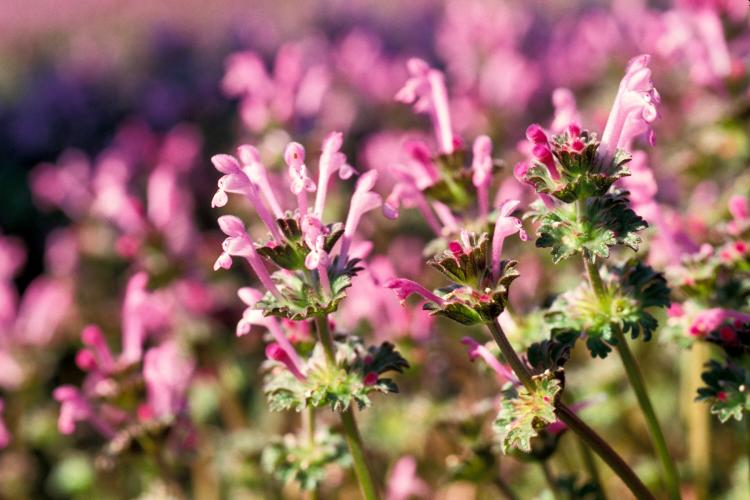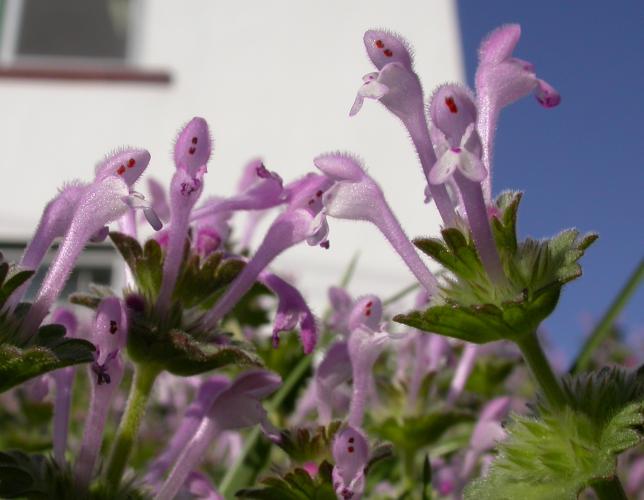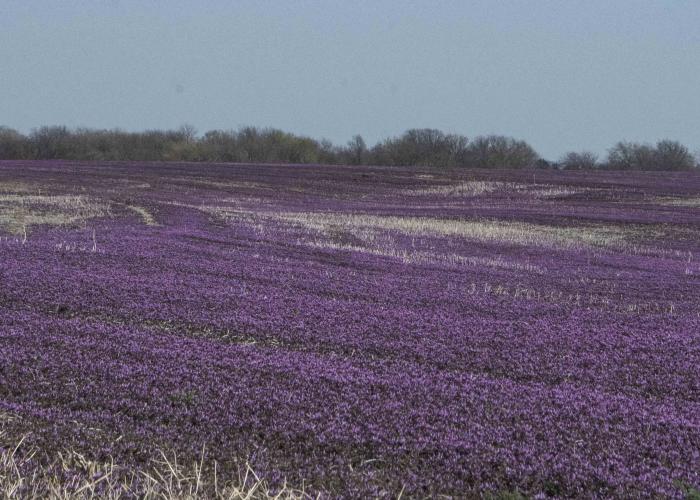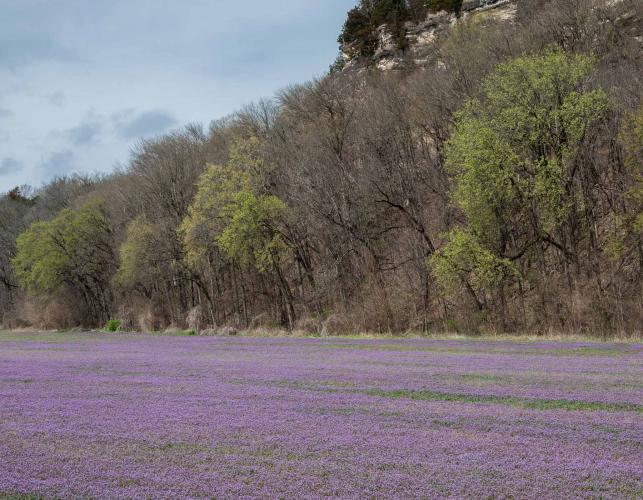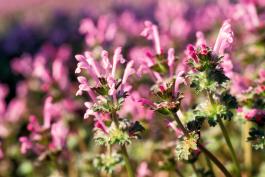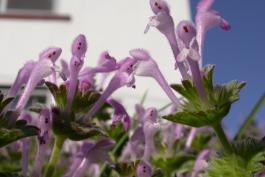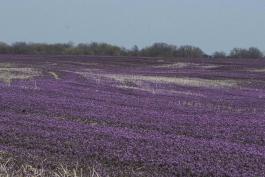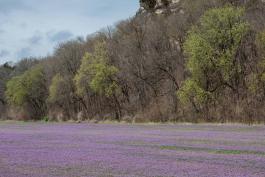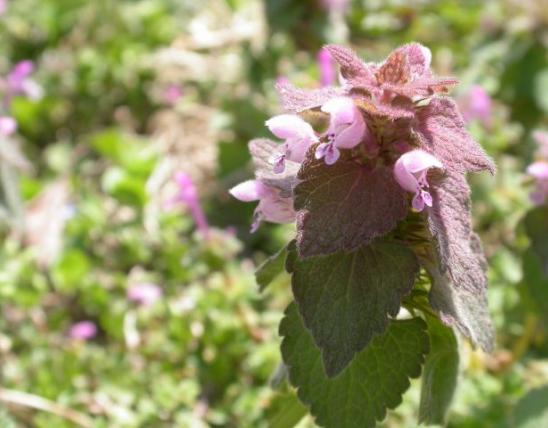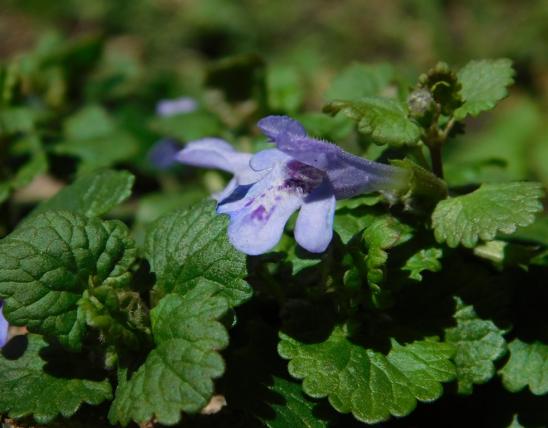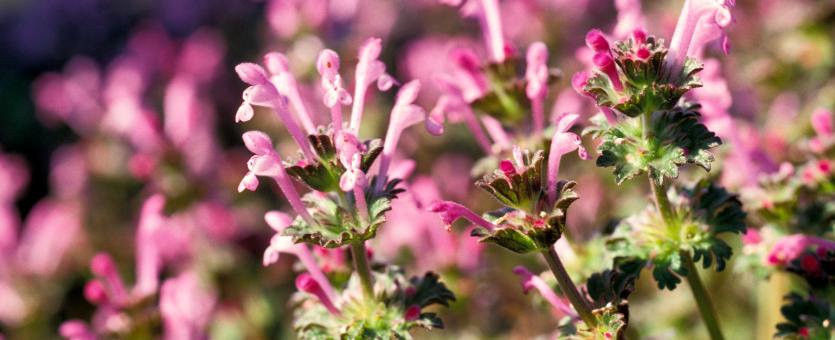
Henbit is a branching, soft, weedy plant with square stems, lacking a pleasant scent, notably blooming in early spring. It blooms February–November. Flowers are small, bright lavender with red spots, with the tubular, lipped configuration typical of the mint family, in terminal clusters, subtended by sessile (stalkless) leaves. Except for the leaves right beneath the flower clusters, all leaves are rounded, scalloped, and close to the ground.
Similar species: Dead nettle (L. purpureum) has a distinctive, 4-sided, pagoda-like or pyramidal leaf arrangement. Its heart-shaped leaves become larger and have longer stems the lower they are on the stalk. Also, it starts blooming in April, slightly later than henbit does.
Height: to 10 inches.
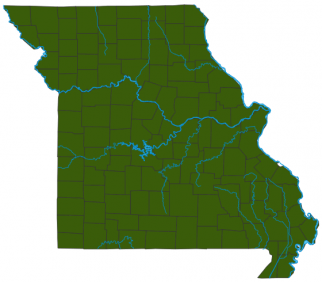
Statewide, but mostly south of the Missouri River.
Habitat and Conservation
Common in waste places, fallow fields, gardens, roadsides, and railroads. Native of Eurasia and Africa.
Status
Common and widespread. Although it is almost universally viewed as a weed, it is not a serious one because its roots are so shallow and it fades before crops begin to grow.
Human Connections
This common, nonnative plant is nevertheless enjoyed for its ability to turn fallow fields pinkish purple in early spring. Its shallow roots prevent it from being a serious agricultural weed. Additionally, it is an edible plant and may be eaten as a potherb or added to spring salads.
Ecosystem Connections
Hummingbirds, butterflies, and bees drink nectar from these early-blooming flowers, and some species of birds consume the tiny seeds. The plants can play a role in binding soils that are otherwise bare and prone to erosion.
